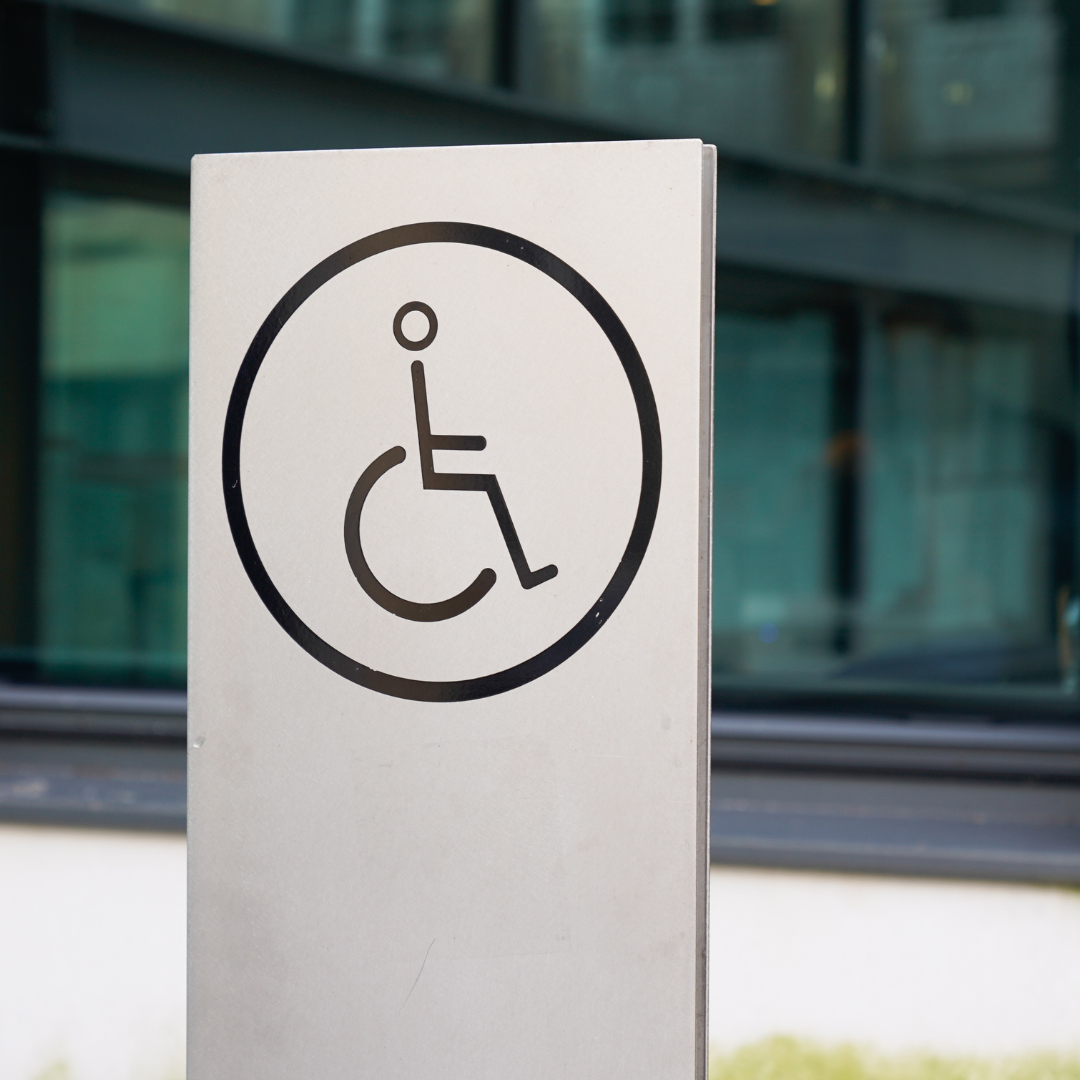Building an Inclusive Future: Accessible Design and Disability in Trades

Joel Emmett
Inclusive Design Consultant

Why we need people with disability in skilled trades.
“My disability exists not because I use a wheelchair, but because the broader environment isn’t accessible.”
Stella Young - Disability Activist, Writer and Comedian
This quote always resonated with me. Think about it – how many times have you encountered something inaccessible, like struggling with stairs or feeling lost in a confusing layout? Good design, especially Universal Design, blends seamlessly into the background. It creates spaces that work for everyone, regardless of age, ability, or situation. Bad design, on the other hand, screams “inaccessible” the moment you try to use it.
Why do such significant oversights occur in accessible design within the built environment? One reason is the lack of individuals with lived experience of disability involved in the design process. This often leads to expensive retrofits later on. Imagine a snowball rolling downhill; the further it travels, the harder it becomes to change its course.
According to the Queensland Government, retrofitting homes with accessibility features can cost over $20,000. Yikes!

The Upside of Inclusive Design
The good news is there’s a smarter approach. The Queensland government has introduced a new scheme to ensure future homes are built with accessibility in mind from the outset. This initiative is an effective way to enhance accessibility for people with disability.
When Universal Design principles are considered from the beginning, they can actually save money in the long run. Studies show that for every $1 invested in Universal Design, there’s a return on investment of up to $13! Features like small ramps or automatic doors benefit everyone, not just those with disabilities. Plus, they make our homes more adaptable as we age.
Australia’s ageing population is a key factor to consider here. With 3.9 million people over the age of 65, that’s 15.9% of the entire population. Universal Design ensures our homes can adapt to our changing needs as we get older – things like wider doorways to accommodate walkers or grab bars in bathrooms for extra support. In short, these features make our living spaces safer and more comfortable for everyone, at every stage of life.
Accessibility: An Untapped Goldmine!
This might surprise you, but in Victoria alone, one million people experience some degree of mobility, self-care, or communication restriction. That’s a significant portion of the population who could benefit more from accessible environments. A City of Melbourne report by Monash University revealed some powerful statistics:
- Universal Design = Smart Business: There’s a potential return on investment of $13 for every $1 invested in universally accessible environments.
- Inclusion Pays Off: Businesses that keep people with disabilities employed see a return of $26 for every $1.
- Disability Dollars Drive the Economy: Every dollar spent by people with disability on travel translates to $7 in revenue for tourism and retail businesses.
- Accessibility Equals Increased Sales: Retail environments with universal design principles see a 20-25% increase in turnover compared to non-accessible ones.
These figures are clear: accessibility isn’t just about social responsibility, it’s smart economics.
More Than Just Ramps: Representation Matters
We need more representation from people with disability in trade professions. People with disability can significantly impact the built environment by pursuing careers in trades. However, according to the Australian Institute of Health, only 19.6% of technicians or trade workers are people with high needs disability, compared to 23.2% of those without disability.
This hits close to home for me. Back in high school, I rarely saw anyone with disability in trade brochures or advertising. Combine that with well-meaning but ultimately limiting assumptions from my parents about the physical demands of these jobs, exploring a trade career never even crossed my mind. It wasn’t until later that I realised how societal bias can shut doors before people even have a chance to open them.

Breaking Down Barriers in Trades
So how can we increase disability representation in trades? Here are some ideas:
- Encourage Students: Showcase success stories of people with disability in trades. Highlight the benefits like career stability, growth, and the opportunity to make a real difference in accessibility.
- Support for Employers: Dispelling misconceptions about hiring people with disability is crucial. Many employers worry about additional costs, but studies show this isn’t the case. People with disability bring valuable perspectives, problem-solving skills, and a unique understanding.
- Pre-Apprenticeship Programs: Develop pre-apprenticeship programs specifically designed to address and support the needs of aspiring tradespeople with disability. These programs could provide tailored skills training, mentorship opportunities, and workplace readiness workshops.
A part of me wonders what it might have been like if I had pursued a trade during my final years of high school and beyond. Who knows, maybe I could have made a difference by contributing to making certain “designs” more accessible for everyone in the built environment.
Some helpful things that you can do to increase people with disability in the trades is talk more about disability. If you know someone with a disability in high school don’t automatically tell them or assume what they can and can’t do. Give them as much support as possible in letting them figure out what they want to pursue after high school as it can be a very stressful time for them.
Including people with disability at the beginning can reap real benefits for everyone in the future, from saving money to creating environments that benefit everyone. The only limit for people with disability is the environment around them, not their disability. This environment includes not only the physical space but also the people around them. Take notice of aspects of the built environment that aren’t accessible to someone with a disability.
Think to yourself “How could I improve this design?”.

Get to know Joel
Joel has graduated with a Bachelor of Communication Design. With Joel’s lived experience of being short-statured and his passion for design, he found a great opportunity at GSA as a Junior Graphic Designer, where he combines both his lived experience and design work to enhance how people with disabilities can interact with digital and printed content.
Outside of work, Joel enjoys being active wherever he can. He enjoys playing sports and running, and has completed the Great Ocean Road and Melbourne Marathon. Joel has also represented Australia at the 2017 World Dwarf games held in Canada, competing in basketball and badminton.


